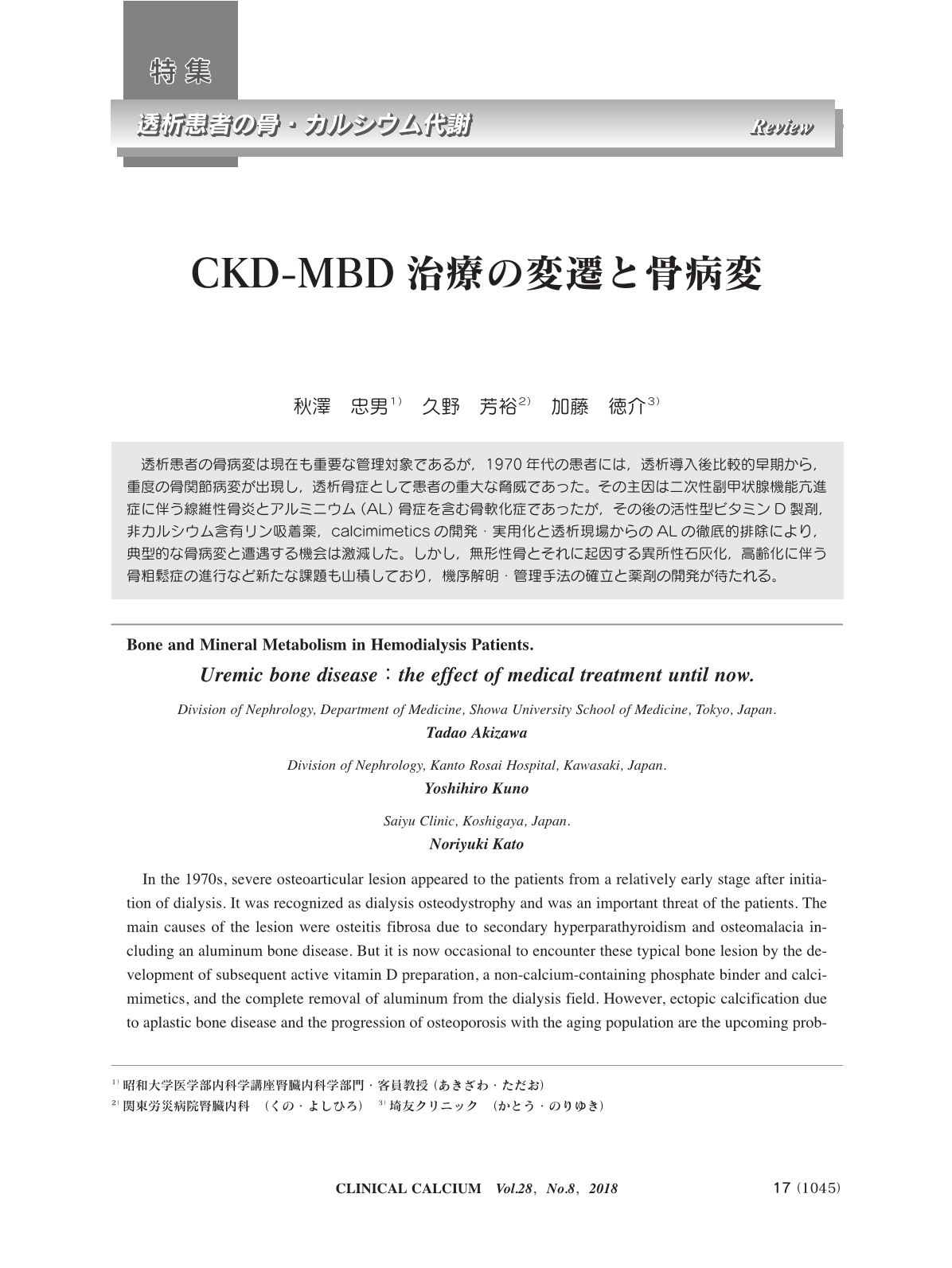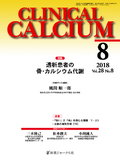Japanese
English
- 有料閲覧
- Abstract 文献概要
- 1ページ目 Look Inside
- 参考文献 Reference
透析患者の骨病変は現在も重要な管理対象であるが,1970年代の患者には,透析導入後比較的早期から,重度の骨関節病変が出現し,透析骨症として患者の重大な脅威であった。その主因は二次性副甲状腺機能亢進症に伴う線維性骨炎とアルミニウム(AL)骨症を含む骨軟化症であったが,その後の活性型ビタミンD製剤,非カルシウム含有リン吸着薬,calcimimeticsの開発・実用化と透析現場からのALの徹底的排除により,典型的な骨病変と遭遇する機会は激減した。しかし,無形性骨とそれに起因する異所性石灰化,高齢化に伴う骨粗鬆症の進行など新たな課題も山積しており,機序解明・管理手法の確立と薬剤の開発が待たれる。
In the 1970s, severe osteoarticular lesion appeared to the patients from a relatively early stage after initiation of dialysis. It was recognized as dialysis osteodystrophy and was an important threat of the patients. The main causes of the lesion were osteitis fibrosa due to secondary hyperparathyroidism and osteomalacia including an aluminum bone disease. But it is now occasional to encounter these typical bone lesion by the development of subsequent active vitamin D preparation, a non-calcium-containing phosphate binder and calcimimetics, and the complete removal of aluminum from the dialysis field. However, ectopic calcification due to aplastic bone disease and the progression of osteoporosis with the aging population are the upcoming problems. To overcome these problems, researches for pathophysiology and mechanism, establishment of the management tools and the development of effective drug are expected.



